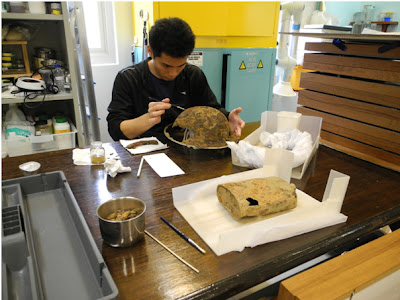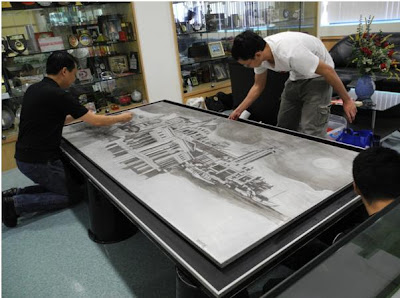Diary of an NUS Museum Intern: Chiam Zhi Quan
Note: Diary of an NUS Museum Intern is a series of blog posts written by our interns about their experiences during the course of their internships. Besides working hard and fast in their cubicles, our interns have travelled to Bandung and Malacca, organised symposiums, waded through tons of historical research and pitched in during exhibition installations. At NUS Museum, each internship is as different from the last. If you would like to become our next intern, visit our internship page for more information!



Chiam Zhi Quan is a first-year student at the School of Design and Environment, majoring in Project and Facilities Managment. Zhi Quan joined us as a Collections Management intern and had the opportunity to be part of the day-to-day work of how our Collections team manages our four collections and prepare artworks for installations.

A short but fulfilling one month in the NUS museum. During the internship, I was given the freedom to work with people from several departments (collection, curatorial, outreach and conservation under The Conservation Studio). This enabled me to better understand how museums function as well as to appreciate art through a different perspective. I no longer have the misconception that art is only about creation.
While the creation of art is important, the preservation of it is as crucial, although it is often overlooked. When exposed to an artwork, most people like me will immediately relate it to an artist or a specific art movement without any acknowledgement to those that have committed to put the work on display. The process of bringing in an artwork (or artifact) to exhibiting it is a tedious process that requires thorough planning. In order to achieve project success, these plans have to be coordinated and communicated both within and between the museum and external stakeholders such as art movers, artists and donors.

In the case of donations made to the museum, the collection department will need to consider storage issues, record and assign accession number to all objects. After which, conservators will be brought in to analyze conditions and determine actions to restore or stabilize the objects. When they are ready to be exhibited, curators will then need to decide on what and how to display so as to effectively convey the message of an exhibition. This is achieve with the manipulation of light and space and good knowledge of each items through extensive researches.

After the establishment of an exhibition, the outreach department and curators will develop programs which further engage audiences. For example, in an ongoing watercolor workshop conducted in the museum, participants were allowed to explore the museum and make sketches of the exhibits. This interaction creates a new level of understanding for the viewers in which they are forced to observe every single details of the display.
In this internship, I was fortunately involved in an upcoming photography exhibition. I was given the chance to participate in the selection process and the designing of the exhibition. Although I did not communicate or work with the artists directly, I learned that a good and close working relationship between artists and curators is important to bring out the best of all exhibits. Artists will definitely have their own concept of presenting their works, but in a museum setting restricted by space, the curator probably plays a more critical role than any artists as it is ultimately their home ground. In addition, this relationship has to be built on trust such that curators can maximize the potential of each works
As a whole, this internship has changed my perception of art and there are many factors to consider in preserving art. We should really credit those that worked hard behind the scenes, as they are the ones that bring the past into the future.


Comments
Post a Comment